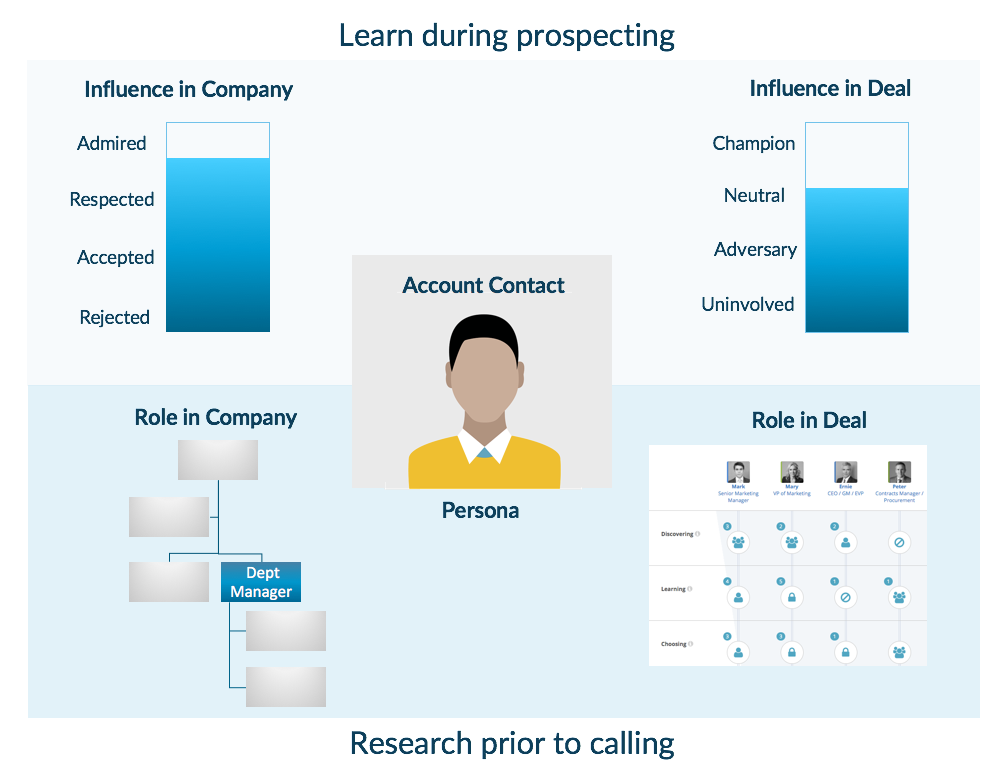They say first impressions are everything. Yet spray and pray, numbers games and overly templatized outreach is rampant in account-based selling. With a targeted account list and complex buying groups, you can’t afford to have sales reps waste opportunities annoying potential leads with out-of-touch emails.
How often does your team send emails with templated things like a Dad Joke? Or lines like “I hope you’re not avoiding me, the last person who avoided me was eaten by a bear”?
And if they do, is there any chance the emails are hyper-personalized enough to know who thinks either of those types of jokes are funny? Or who might think they are never funny? It’s unlikely. But the rules of numbers games encourage alienating a bunch of leads/contacts if it increases a 2% response rate to 3%. The math on this is still bad. Remember, silent contacts really are telling you something.
Think about how often these contacts post examples of sales emails on LinkedIn pointing out poor (AKA ineffective and annoying) sales emails. Buyers are annoyed.
It’s time to start relationships off better
This starts at the top.
Sales leaders need to create goals and quotas aligned to quality over quality.
Then leadership must provide training and technology that enables reps to deliver quality. After all, there’s a lot for sales to know about each buyer they engage with.
Mentor reps to start off each relationship by spending the 5-15 minutes it takes to find just one relevant thing in common. Or, find some detail that will spark interest based on their interests. This isn’t going to be “do you want 20% higher ROI?” or “improved CPL.” Yes, everyone has that in common. But it needs to be something that is authentic and interesting specifically to that person.
Think about this in a quid pro quo type manner. If sales reps give something of value, they’ll be more likely to get something of value in return. If what’s given conveys “I did no work to reach you”, it likely won’t earn a response. It’s time to give more to buyers! Learn more, find out what groups they are part of, and even what business initiatives are they actually working on this month/quarter. Are they posting peeves on LinkedIn about anything? Reps should spend 5-15 minutes to find something topical for them.
Beyond the first impression
Tactically, once sales gets a response or a connect—and hopefully has engaged the lead in a conversation that puts them in your pre-pipeline—now there’s strategic work to do to reach a meaningful understanding of the buyer. Sales needs to be purposeful about overcoming “the trust deficit.” This starts with a better understanding of who buyers are, how they work in their company and how they prefer to communicate with you.
6 things reps must learn about every buyer

1. An evolving hypothesis of the business problem or challenge
In order to bring value to the conversation, sales is going to need an understanding of problems and why the buyer should take an interest in what they are selling. At every step, from first impression through close, the business problem should be at the forefront.
2. Buyer personas
At a minimum, sales needs to understand the core attributes buyers in a role usually have in common. This includes things like what motivates them, the success criteria they are trying to meet, how risk averse they are and preferences around communication and learning. Here’s an example buyer persona. Know these factors before speaking with buyers and have a hypothesis problem in mind.
3. Role in the company
Beyond the title and job each buyer has, how does that role fit into the overall company structure? “Director of Technology” might mean one thing at a startup, and something else at an enterprise, or B2B vs B2C, etc. It’s important for reps to understand how their buyer’s role in the company shapes their responsibilities, focus areas and level of expertise. Research this beforehand and consider how they are impacted by the business problem.
4. Role in the deal
While personas, job roles and company types provide a good guide for how a buyer is likely to participate in the buying process, they need to evaluate each situation for each prospect. Understanding how the buyer participates in different parts of an evaluation and buying process is critical. Sales reps in complex deals need a framework for managing these buying groups so they can easily understand if they are navigating the deal with the right group of contacts. Extracting this information can only come through multiple conversations with the buyer.
5. Their influence in the company
How much visibility and control of business goals does the buyer have? Are they admired by the leadership team, just accepted as a group member, or are their recommendations typically rejected for being risky? Sales reps can do some work on this in advance. For instance, looking for signs of trust and admiration through referrals/recommendations on LinkedIn. Less positive assessments will probably need to be assessed during the sales process.
6. Their Influence in the deal
Sale reps also need to understand how the buyer influences the deal. How does the balance of role and influence impact the importance of the buyer’s support in a buying decision? Are they admired in the company but completely uninvolved in the process? Or respected in the company but an adversary in the deal? Understanding these nuances is a critical part of getting to know buyers and the buying group at large.
Start selling off right—with a strong first impression—and build the relationship through a balance of research that can be done in advance (to earn trust) and information that must be gathered through the selling process.

